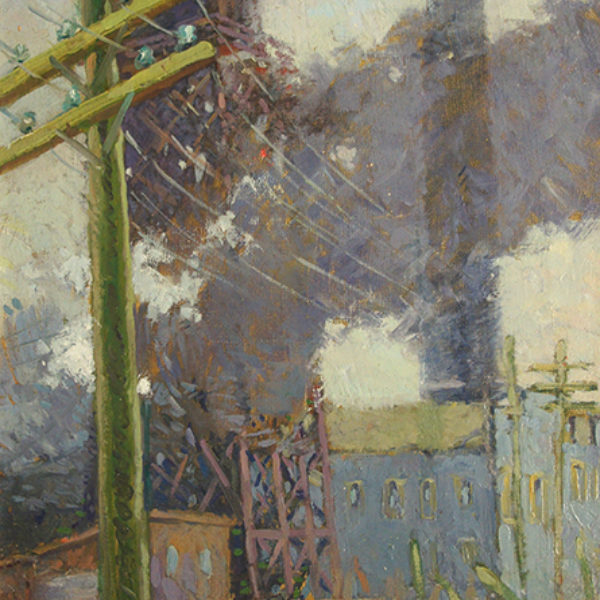Frederick Grant
b. 1886, Sibley, IA - d. 1959, Oakland, CA
Frederic Milton Grant was born in Sibley, Iowa, on October 6, 1886 into a family of farmers. His mother was cultured, especially in music. Grant composed sentimental songs as early as age 9. After high school, he went to Fargo, North Dakota, to study architecture but after deciding that he didn’t want to build grain elevators his entire life, he changed course and began studying drawing and painting at the School of the Art Institute of Chicago (SAIC). Grant traveled to Venice, Italy, in 1907, taking summer classes with William Merritt Chase, who awarded Grant the annual prize for best summer student. (He studied with Chase again in the summer of 1914 in Carmel, California.)
On that first trip to Europe, Grant also visited Paris, where he viewed the work of Monticelli, the expressive colors of Monet, and the innovative structures of Cézanne. Instead of finding affordable housing in the bohemian Montmartre district, Grant settled in the more expensive Latin Quarter, where fellow dinner guests supported his stay by buying his sketches. Grant returned to Chicago with 20 cents in his pocket but more confident in his training. He became a popular and respected member of the local art community, joining the Arts Club, the Cliff Dwellers, and Chicago Society of Artists. He exhibited at Raymond Katz’s Little Room.
Chase's influence—and the influence of French Impressionism in general—is evident in Grant’s brilliantly colored work Telephone Poles, 1911, which renders an impressionistic view of the urban landscape. Billows of gray and white smoke partially obscure the sketchy, soft-edge industrial structures in the background. A bright green telephone pole looms large at left, as if growing out of the ground like a tree. Grant was particularly known for decorative landscapes such as this one, which prettifies the city’s grime. More importantly, however, it celebrates the advent of modern technology—the Illinois Bell Telephone company served 34,000 phones in 1900 and increased to roughly one million by 1930.
Although a conservative painter for his time, he was lauded by critic C. J. Bulliet for capturing the “jazz-mad riot of color” as well as the “emotional content” of the Century of Progress exposition. His works depicting the fair were the strong points of his career. Later, having sold enough work to subsidize a world tour, Grant visited China, Japan, Bali, Cairo, and Alexandria, sketching all the way. In 1947 Grant moved to Oakland, California, where he remained until his death on February 4, 1959.
Lisa Meyerowitz
References
Bulliet, C. J. “Artists of Chicago Past and Present: No. 62: Frederic Milton Grant.” Chicago Daily News. April 25, 1936.
Grant, Frederic. Pamphlet file, P00795. Ryerson Library. Art Institute of Chicago.
Greenhouse, Wendy, and Susan Weininger. Chicago Painting 1895 to 1945: The Bridges Collection. Exh. cat. Springfield: University of Illinois Press and Illinois State Museum, 2004.
